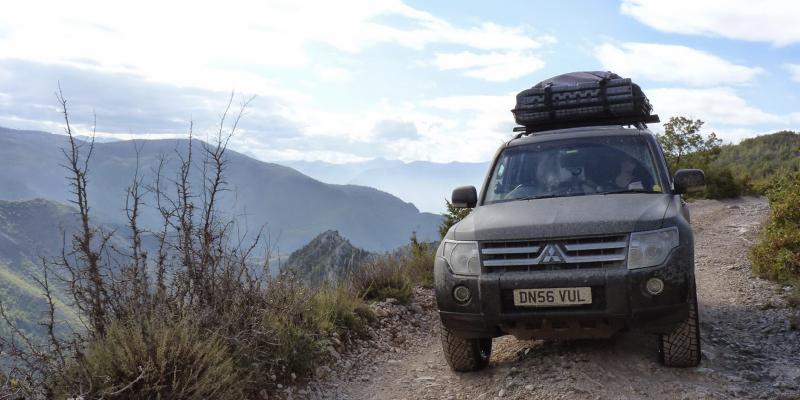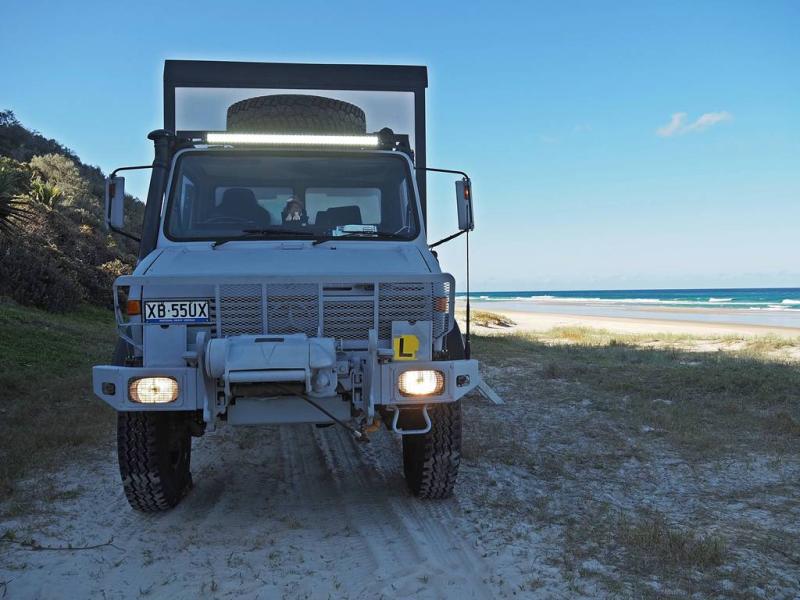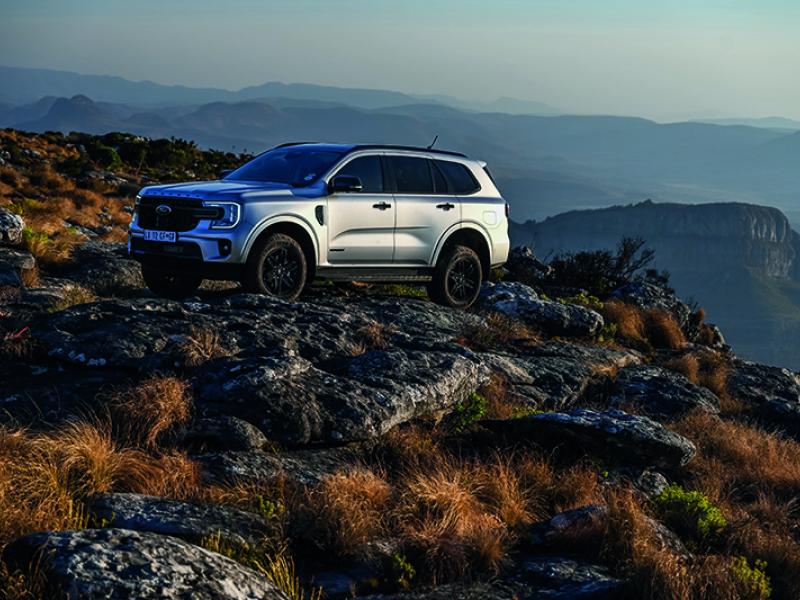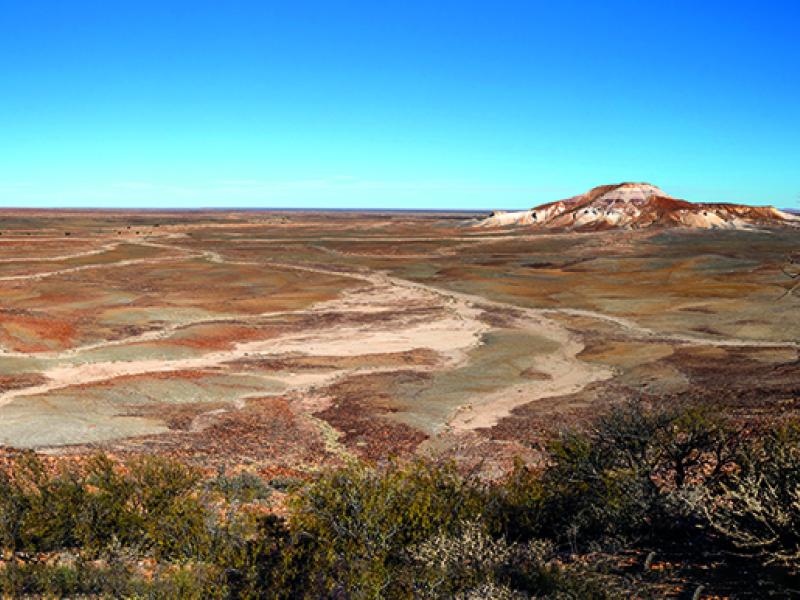Albania is a country few Kiwis know much about. As good an excuse as any, reckons keen Overlander Aaron Rich, to pack up the Shogun (Pajero) and family for a little fact-finding mission.
Given that this country in the Balkans isn’t big on promoting itself, perhaps it isn’t surprising few know much about the place.
Certainly, Albania is a relatively poor country by financial measures and as such lacks infrastructure in some areas. However, as we found out, it is rich in terms of natural beauty and scenery. Equally important is its fantastic culture and its incredibly friendly and hospitable people, which was obvious to us in spite of the language barrier. As such we discovered Albania to be a country well suited to exploring 4WD Overland-style and moreover it’s been one of our most enjoyed destinations.
East/west divide
Albania’s West is home to several vibrant cities, including the capital Tirana; these places have the expected levels of infrastructure and are easily accessible to any tourist. In contrast, to the East it appeared to me that some Albanians live lives seemingly lost in time, in remote and simple villages set amidst beautiful mountain scenery.
These remote villages are connected by a string of what most of us would deem to be ‘4WD tracks’, and with no option to choose an alternative route that is paved or graded, it’s the ‘4WD track’ or nothing.
So, does this mean these Albanian villagers all drive 4WDs? No. Donkeys and wooden carts are still popular, as is riding a horse or even just going on foot. We typically observed only one or two old 4WDs in most remote villages when passing through. All of this means that these villages are well and truly off the beaten path – a side to Albania that mainstream tourists don’t get to see, if they even know it exists.
The plan
What I set out to do in Albania was to plot a series of routes that would permit us to travel up the length of the country, connecting together remote villages set against stunning mountain scenery using the available dirt roads and tracks. The photos that accompany this article are a selection from all our time spent in Albania, spanning two separate visits to the country.
As it is simply not possible to describe all of these routes in a single article, I will take the approach of referring to select photos in order to convey some interesting aspects of our Albanian adventures.
Photos 2 and 3: The photo of the old woman riding on a donkey is very memorable to us. We had stopped fairly high up, at the side of a track to cook lunch, and being off-road in an isolated spot we believed we were all alone. Incidentally, Sylwia hates having her photo taken whilst preparing a gourmet cooked meal at the back of the car, in case it gives the impression she’s always cooking at the back of the car – reality check Sylwia, you are always cooking at the back of the car! But I digress.
Entirely unexpectedly, the old woman rode out of the bush on her donkey. Her attire suggested she’d not only ridden through the bush, but about 100 years of time too! Due to the language barrier we couldn’t converse – she didn’t speak a word of English and from our perspective it’s not practical to attempt to learn the language of every country we wish to visit.
She was certainly very interested, however, to inspect our pull-out kitchen at the rear of the vehicle. In this simple part of Albania, I wonder if our vehicle-based kitchen might well have rivalled what she had at home in her village. What really struck us, though, was when she pulled from her pockets all the nuts she had been gathering in the bush. She seemed far more in need of them than we, yet she couldn’t give them away fast enough, despite our reluctance to accept. She wanted nothing in return.
Hospitality-plus!
We were to learn that this would be a recurring theme which we would experience more of in Albania. Such generous hospitality is deeply rooted in Albanian culture, which dictates that guests must be welcomed wholeheartedly. I’m also now aware of how important it is not to take this for granted, as it seems some local people might willingly feed and accommodate you even where their resources are really only sufficient to provide for themselves.
In another similar case we had set up camp on a small grassy plateau by the side of a remote track, at altitude and just out of a village – deliberately so, as we didn’t want our arrival noted sooner than we were ready to deal with any curiosity we might provoke. (For background, there are few commercial campsites in Albania and none in the part of the country we were touring – in remote areas you are expected simply to make camp for the night wherever you find a suitable spot.)
Shortly after dark a young and an old man led a packhorse up a mountain path that came up onto the grassy plateau near our tent. The two men had been picking the oddest looking variety of tomatoes we had ever seen and loading them into leather bags on the horse – a routine that likely would have looked exactly the same 100 years ago. I think these two were more surprised to find us camped there than we were to see them and initially they led the horse by our tent without a word, then paused and led the horse back to unload tomatoes outside our tent.
Repeated generosity from local people soon left us feeling determined to repay it and eventually I had opportunity to do so in a small way. The following day, with fresh tomatoes on board, we were navigating another narrow cliff edge dirt track when we came across three men and a tractor with a flat tyre – see photo 10. They were attempting to inflate the tractor tyre with what looked like a slightly oversized bicycle pump and, not surprisingly, appeared to be making little progress. I was very happy to leap in and use my onboard air compressor to make quick work of inflating the tractor tyre (relatively quick work – it was a tractor tyre after all!).
Photo 11 shows a very dodgy bridge that we needed to cross. Despite its apparently unmaintained condition, I believe this bridge forms part of a regularly used route for which there is no alternative means of crossing the river.
This was the first such bridge we encountered on our explorations in Albania (but it wouldn’t be the last) and initially we weren’t aware just how bad its condition actually was. Gaps in the wooden planks nearly big enough to drop a wheel through didn’t inspire confidence, but more concerning was the way in which the rusty steel structure ‘moaned’ under the weight of our vehicle! Slowly we progressed over the bridge. The second half proved the most challenging, both because it was the most deteriorated section and because doing it meant going beyond the point of no return. It was with a deep sigh of relief that I eventually drove off that bridge. But if you go 4WD exploring in less developed countries these sorts of obstacles do inevitably present themselves.
Photo 12 shows a derelict looking building with a cross outside. In New Zealand this really would just be a derelict building, complete with a barely level dirt floor... but in Albania it’s a remote mountain café.
In fact cafés like this are not uncommon in Albania. Some located in villages attempt to cater to the sporadic arrivals of 4WD tourists, whilst those in even more isolated spots – like the one pictured – appear to be intended for locals to meet at; quite possibly including shepherds that we would see wandering great distances tending their flocks.
On a related theme, see the photo of my vehicle parked outside a distinctive two storey building in photo 18. That is also a café and it is located in yet another little mountainside village, this one called Gjerbes.
The beautifully situated Gjerbes is a rather interesting place. Roads into and out of the tiny village are dirt tracks suited to 4WDs, yet as we commonly observed with other remote villages, the road through the centre of the village was paved. Paved with surprisingly clean tiles in fact, which made me feel rather guilty as I drove from the muddy track onto the tiles, leaving a trail.
We counted no less than five old buildings in use as cafés dotted around the village square – no other businesses of any kind were seen, just cafés. Most of these cafés had no customers besides a few (non-paying?) village residents, so our arrival did not go amiss! The owner of the café we’re parked outside in the photo literally ran outside to invite us to visit his café, which we accepted. It turned out to be an excellent opportunity to have a very informative chat with this young English-speaking Albanian.
He explained that at one time the village had had a population of 1,000, but that the younger generation increasingly left villages such as Gjerbes to go in search of greater prosperity elsewhere. And we could see evidence of this all around, not only in Gjerbes but in other similar villages too.
The shrinking rural population leaves a trail of abandoned homes, for which there is no market – why would there be a market for these simple houses where locals determined to leave the area simply abandon them. This gives rise to a phenomenon where around half of most of the remote mountain villages we explored consisted of derelict abandoned homes falling into ruin, while the other half of the village could be nicely maintained.
Café culture
It seems that the easiest business to open for those remaining in these villages is a café, especially where the village is along a route used by modern day 4WD tourists.
Which goes some way to explain Gjerbes, with its five cafés’. It benefits from being at a crossroads where two 4WD routes across Albania intersect. I don’t know how many individual 4WD Overlanders like us are out there using these routes, as we only encountered one other like-minded couple, who had driven their Toyota Prado from Poland. What I think is more common is that various organised 4WD rallies and tours originating from elsewhere in Europe account for occasional vehicle convoys on these routes. Stickers from such rallies and groups adorn the front doors of the cafes. So it would appear that business is a case of feast or famine for these aspiring café owners – most of the time no one visits the village, but on a lucky day a whole group of 4WDs might arrive.
In a village where you may not see a single customer all day it must be difficult to keep a supply of food/cakes, etc – coffee is mostly all the cafes serve. When we asked our young host at the café in Gjerbes if he sold bread, rather than be sold bread, half a loaf of freshly baked bread was obtained from a house in the village and freely offered – our offer of payment was declined. In this instance the culture of hospitality seemingly clashed with business sense.
Photo 19 shows the north-eastern Albanian town of ‘Kukes’, taken from the rooftop of the Hotel Amerika, where we stayed. Kukes is a gritty little town. It lacks the wealth and infrastructure seen in more vibrant cities in Albania’s west like Tirana, Schkoder and Sarande; the Hotel Amerika is as good as it gets in Kukes.
Nonetheless, Kukes seemed the right place to have a minor repair carried out to my vehicle – just a relatively simple replacement of a switch mounted to the outside of the 4WD transfer box. You’d never find the right part in a place like Kukes, but I was already carrying the part in my spares box and just wanted it fitted; this being before our visits to Morocco convinced me of the need to take over doing all my own mechanical work.
I found a local mechanic and another local offered to translate. It was agreed that I would meet the mechanic the following morning. The next morning the mechanic arrived very well dressed and the service to my vehicle commenced with my being taken out for coffee at a local café – it seems I had attained some status merely for coming to Kukes.
It was however a somewhat awkward coffee, as the translator was not present and my host spoke not a single word of English. Nevertheless, he performed excellent work at his sparsely equipped workshop and at very low cost.
Finally, Photo 20, shows a mid 1990s second-generation Mitsubishi Pajero in full Police trim. As far as I could tell that really is a two-decade old vehicle. Pajeros are known for their reliability and in remote villages we spotted some first generation models from the 1980s still in use.
Notwithstanding Albania’s limited resources, I was still surprised to see a 20+ year old vehicle still being used in daily commercial service.
Hopefully this article has given you some insight into what 4WD travel to off-the-beaten-path parts of beautiful Albania is like. The purpose of 4WD Overlanding internationally is as much about experiencing different cultures and the different ways in which people live elsewhere in the world, as it is about seeing different landscapes from those we’re accustomed to.
Albania delivered wonderfully on both fronts.







